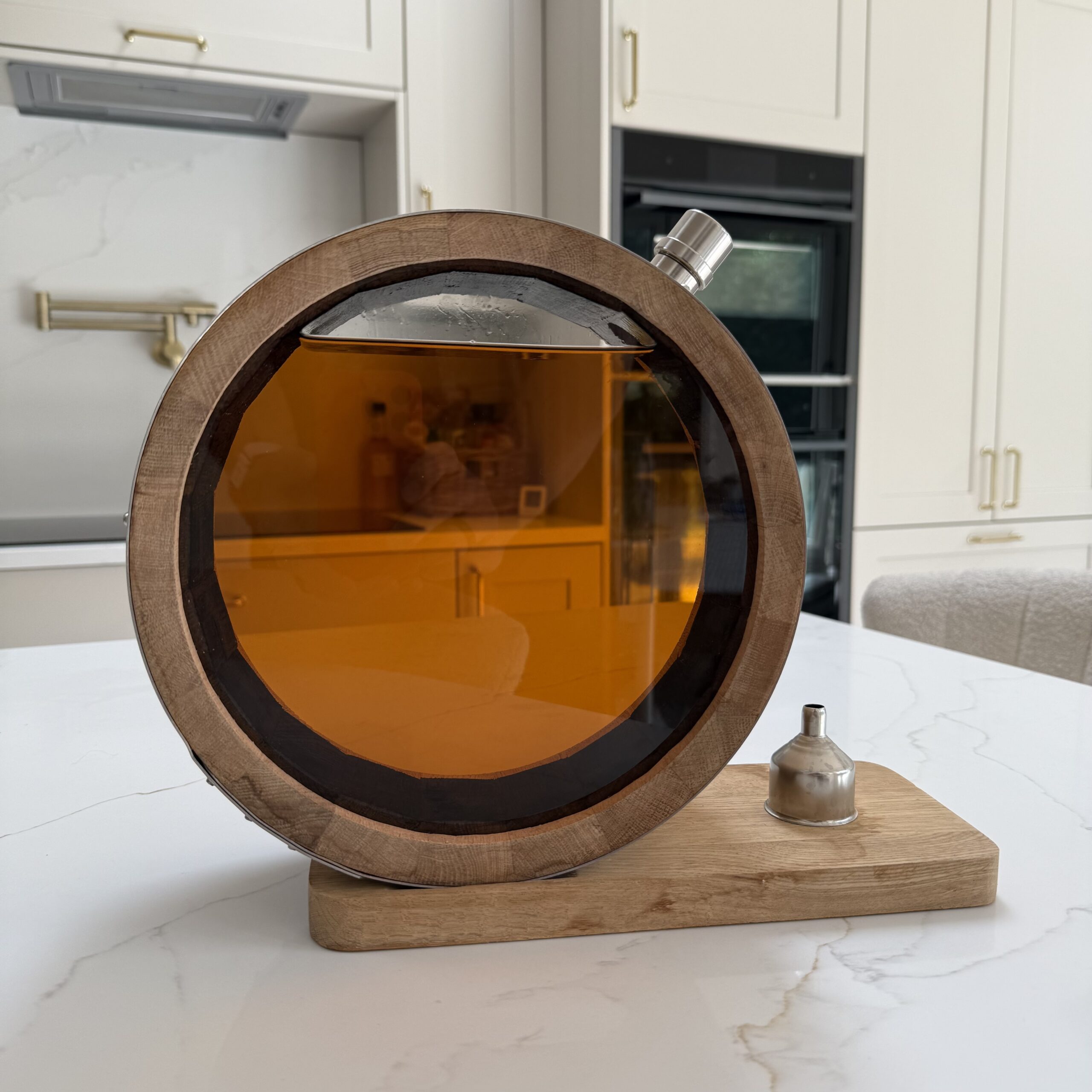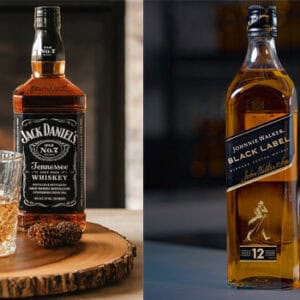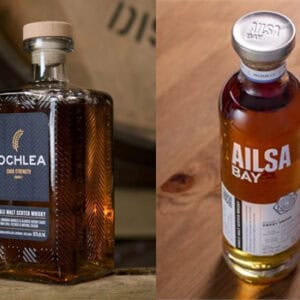How Whisky is Enjoyed Differently Around the World
‘Too much of anything is bad, but too much good whiskey is barely enough’.
Whisky/whiskey is a globally recognised and globally revered spirit. It has been around for centuries and it seems to get more and more popular with the passing of every single year.
Now, to non-whisky drinkers, and yes, there are sadly a few out there, whisky is whisky. To true whisky afficionados however, whisky is incredibly different depending on how it’s made, and indeed, where it’s made as well.
Because this fabulous spirit is so popular, more and more countries and cultures have embraced it with open arms, adding their own unique spin to the drink and producing what they consider to be the ultimate whisky.
But is a whisky distilled in Scotland really that different to a whiskey produced in America, or anywhere else for that matter? If so, are they enjoyed differently? Well, that’s what we’re going to be finding out shortly.
Here’s a look at the different types of whisky from around the world and how it’s enjoyed so different from region to region.
Scotch whisky
Of course, we’re getting things started today, with a quick look at Scotch whisky.
Whisky is a spirit that is synonymous with Scotland. The mere mention of the word conjures up images of dark moody skies overlooking the rugged and barren Scottish Highlands.
What the Scots don’t know about producing whisky is probably not worth knowing. Scotch whisky is protected by GI (Geographical Indications) status which means that legally, Scotch whisky can only be produced in Scotland. Countries can base their whisky on Scotch, but by law, they cannot market their whisky as Scotch.
Scotch whisky generally has a peaty, earthy profile, with added fruit, smoke, and oak notes. It is generally a very high ABV tipple and can certainly burn on the way down, especially if you’re not used to this amazing drink.
A large percentage of Scotch is single-malt whisky, which is made from malted barley that comes from just one distillery.
Enjoying a Scotch whisky
True Scotch whisky purists will tell you that the best way to enjoy a high quality Scotch is to enjoy it neat and at room temperature. It is designed to be sipped slowly and savoured, gently warming your throat and awakening every sense in your mouth.
Some Scotch, however, is best enjoyed with just a couple of drops of mineral water. This can help dilute the bite from the alcohol so you can appreciate the flavours and aromas of the whisky.
Scotch whisky is generally NOT designed to be mixed, so we don’t recommend ordering a premium quality Scotch and cola, not unless you want to get some particularly funny looks from the barman or barmaid serving you.
Irish whiskey
Heading west across the sea next, to Ireland, to learn more about Irish whiskey. Notice the added ‘e’ in the spelling? The thinking behind this is simply that Irish distillers decided to spell their whiskey this way to help people tell the difference between Irish whiskey and Scotch whisky.
Irish whiskey is generally much mellower and smoother, meaning that you don’t get quite as much bite and burn with this whiskey as you would with Scotch.
Traditionally, the main style of Irish whiskey is known as ‘pot still’ and rather than Scotch, which is double distilled, it is actually triple distilled instead, though some blends are double distilled. The Irish also make their whiskey from both malted and un-malted barley. This helps to add a freshness with fruity citrus undertones.
Irish whiskey is often blended and the grains are dried over a smokeless heat source to give a much smoother finish and completely different characteristics when compared with Scotch.
Enjoying an Irish whiskey
Irish whiskey is a lot smoother and more mellow than Scotch, and is renowned for its sweet and rich undertones, with notes of caramel and toffee in particular, often shining through.
Whereas some Irish whiskey drinkers prefer it neat, at room temperature, most people believe that Irish whiskey is best when chilled. Chill the bottle and tumbler in the freezer for an hour before serving, stoke up the fire, kick back, relax, and forget all your troubles as you sip on this smooth amber nectar.
To help keep your whiskey cool for longer, invest in a set of whiskey stones as ice cubes will dilute and spoil the taste.
American whiskey
Up next, we have American whiskey.
Now, when talking about American whiskey, generally you have rye and bourbon as the two standouts, with Tennessee whiskey also in the mix.
A rye whiskey must, by law, be made from a mash consisting of at least 51% rye. Rye is a grass grown in northern parts of the US as a grain. Usually, the mash will also contain malted barley and corn.
Rye fell out of popularity in the mid-twentieth century, but as of late it has slowly gained popularity once more. It has floral, fruity, and spicy notes which many compare to Scotch whisky. Once considered a whiskey for more “mature” whisky drinkers, research has shown that younger whiskey drinkers in the States are beginning to gravitate towards rye.
Bourbon whiskey, however, must legally be predominantly corn. This means that the mash must be at least 51% corn.
After the Whiskey Rebellion, distillers in the US headed south for the hills, and set up shop in places like Kentucky and Tennessee. The soil quality and the warmer, more humid climate meant that corn was plentiful when compared with rye. Back then it was simply a case of making do with what they had. Luckily for the distillers however, it turned out that a mash made predominantly of corn made for an incredible tasting whiskey that was much sweeter than rye, with notes of burnt sugar and caramel.
Bourbon must also be aged in new charred oak casks, this gives the whiskey a deep and rich burnt honey colour with smoky undertones.
You may also find people talking about Tennessee whiskey. Tennessee whiskey is very similar to bourbon, except by law, it must be produced in Tennessee. Bourbon however, can be produced anywhere in America.
Enjoying American whiskey
If you’re looking to enjoy a rye whiskey, it is best when sipped neat, or with mineral water ice cubes if you find the spicy notes and the burn a little bit too harsh.
As for bourbon or Tennessee whiskey however, these are perfect for use in cocktails or mixers. An Old Fashioned made with a good quality bourbon just cannot be beaten.
If you’re more of a Tennessee whiskey fan however, everybody knows the classic Jack Daniel’s and coke, so there’s nothing more to say on that subject really (although it also goes well with lemonade, as well as ginger ale).
Canadian whiskey is often referred to as a ‘rye’ whiskey because primarily it used to be made from rye. This wasn’t due to legal reasons, it was simply down to the fact that rye grows so well in Canadian climates.
Nowadays however, Canadian whiskey contains little rye and is made from a combination of corn and wheat. These ingredients, combined with the fact that the whiskey matures in American oak casks, help the whiskey to take on fruity, sweet, spicy, floral, and smoky notes.
Canadian whiskey is almost like a hybrid of American and Irish whiskey with a hint of Scotch.
Enjoying Canadian whiskey
In Canada, whiskey is often enjoyed neat, served on the rocks with a twist of lemon or orange peel. As the cubes melt, they help to intensify the sweetness while amplifying the fresh floral notes of the whiskey.
For best results, use ice cubes made from fresh mineral water, it sounds ‘extra’ but it really makes one heck of a difference.
Finally, heading to ‘The Land of the Rising Sun’, we have Japanese whisky.
Japanese whisky is gaining popularity amongst whisky purists and is about as close as you can get to Scotch whisky, without actually being a Scotch whisky.
Since the 1920s, the Japanese have been using techniques similar to those used to produce Scotch, to make their own range of whisky from a mash which is predominantly barley imported from Scotland.
If there’s one word you can use to sum up the Japanese, it’s ‘innovative’. Despite Japan not having much experience when it comes to producing whisky, they’ve been incredibly innovative during this process, experimenting with different casks, different still sizes, different still shapes, different yeasts, different peats, different grains, different temperatures, and much more besides.
Perhaps the most distinctive feature of Japanese whisky production however, is their use of Japanese oak casks, which are called ‘Mizunara casks’. Japanese oak is full of naturally occurring sugars and oils that give the whisky an amazing aroma, flavour, and mouthfeel. The problem is that the oak tends to leak after a while. To counter this issue, Japanese whisky matures in ex-bourbon and/or sherry casks and is then transferred to the Mizunara casks for a much briefer aging period.
Because there is so much going on with Japanese whisky, each batch is different and unique. If you imagine a creamier, spicier Scotch, you wouldn’t be a million miles away from a Japanese whisky however.
Enjoying Japanese whisky
You can sip Japanese whisky with whisky stones or mineral water ice cubes, but the best way is in a highball. Simply combine the whisky with mineral water ice cubes, a splash of soda water, and top it off with a twist of lemon. This is perhaps the most refreshing way to enjoy whisky.
Whether you’re a fan of Scotch, rye, bourbon, Tennessee, Irish, Canadian, Japanese, or any other kind of whisky/whiskey for that matter, if you’re looking to grab a new bottle or two, be sure to check out https://greatdrams.com/ for all your whisky needs.
Great Drams have whiskies to suit all tastes, and all budgets as well, and a wealth of whisky knowledge just begging to be explored.
Photo by John Cafazza on Unsplash
Greg
You might be interested in
More from the blog
Follow greatdrams
latest articles
Latest whisky
exclusively from GreatDrams
-

The GreatDrams Signature Barrel Decanter
£200.00 – £370.00













